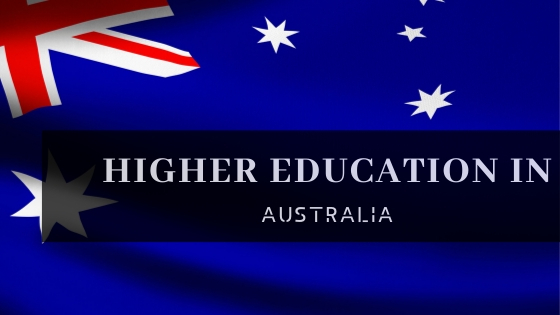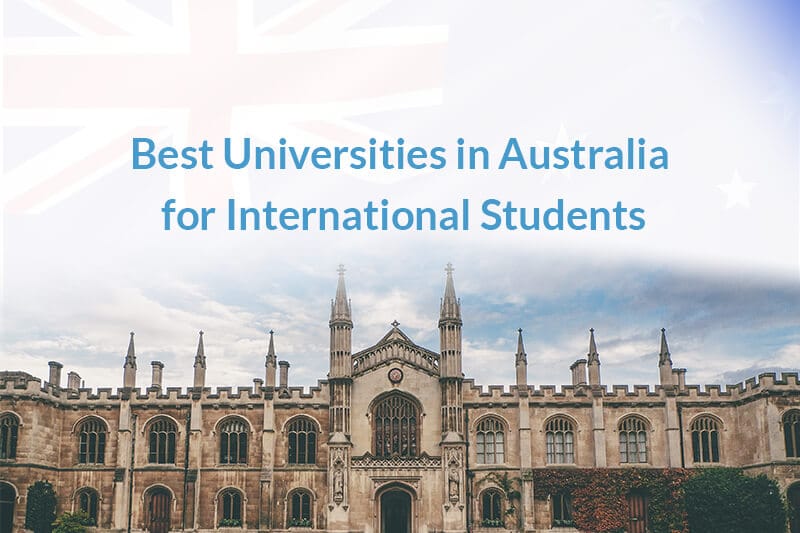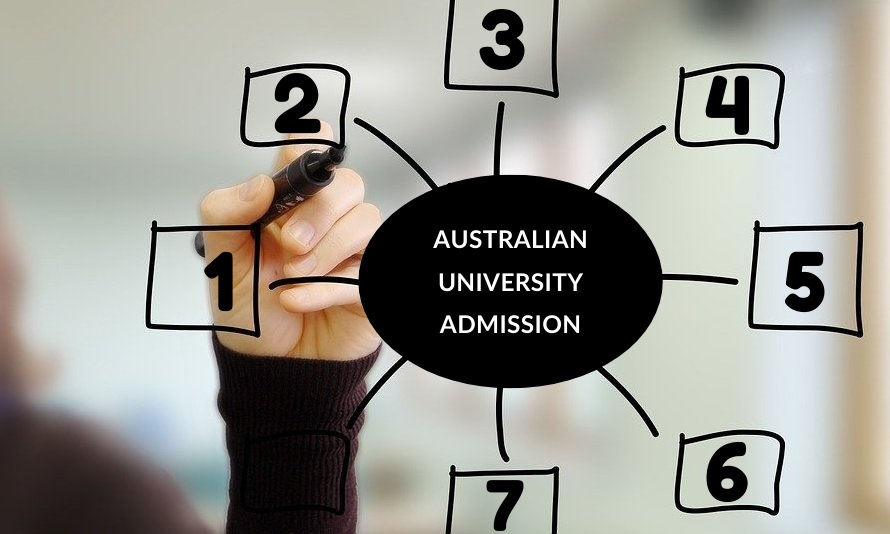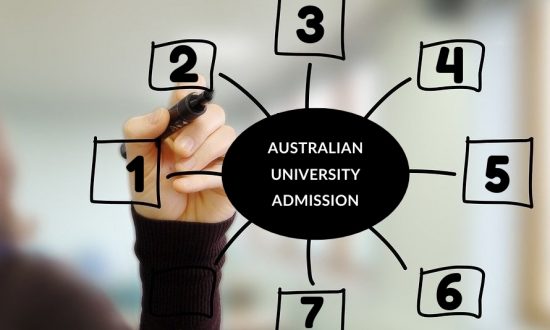Topics Under Article Hide
- Top 40 Universities in Australia for Higher Education
- Education Framework for Higher Education Australia
- Admission Process in Australia | Higher Education in Australia
- Cost of Attendance of Higher Education Australia
- Scholarships for Higher Education Australia
- Scholarships in Australia to Study
- Criteria to Apply to Scholarships to Study in Australia
Australia proposals a varied range of study choices for international scholars, with more than 1,100 institutions and 22,000 sequences to choose from. Topics Covered Under Article : Higher Education Australia | Admission Process in Australia | Scholarships in Australia | Top 40 Universities in Australia | Accommodation Costs in Australia | Study in Australia . Australia’s instructive institutions rank well in footings of scholar satisfaction, employability, quality of life and intelligence of scholar community, with Melbourne and Sydney position among the top five finest cities for scholars to study in.

Both of these cities are home to a array of top ranking organizations including The University of Melbourne, The University of Sydney, University of New South Wales, Monash University, Macquarie University, RMIT University, and numerous more.
University is the uppermost level of education in Australia. Australia has 39 colleges: 37 government-funded public universities and two private campuses. Scholars can attend on-campus bachelor degrees or advanced options (including certificate, postgraduate diploma, master and doctoral programs). Vocational options focus on practical services and industry training. Vocational training courses are obtainable in government-funded organizations, including TAFE (Technical and Further Education), or other private organizations. Many colleges offer scholars credit towards university options.
The Australian education system is illustrious from many other republics by the Australian Qualifications Framework (AQF). The AQF was recognized in 1995 and is a nationwide policy that covers experiences from the tertiary education subdivision (higher education, vocational teaching and training) in adding to the school leaving diploma, called the Senior Secondary Documentation of Education.
Australia is an perfect place to enjoy a world class teaching and outstanding superiority of life, but there are several expenses to reflect before you education overseas.
Australia does very well in terms of affordability, with living expenditures (such as private rent) and tuition costs similar with the United States and United Kingdom. You can also earn a minor amount by working part-time while you education.
The Australian Government endorses a single scholar budget of AUD$19,830 a year for living expenditures. Accommodation costs are a large module of living expenses; an payment should be made for recreation, emergencies and health expenditures not covered by Foreign Scholar Health Cover. Exchange rate differences may also touch budgeting. Knowing the regular living costs in Australia is an significant part of your financial groundwork.
The regular tuition fees at one of Australia’s tertiary organisations ranges between AUD$20,000 and AUD$30,000 a year.
There are a range of grants available for international scholars. It is best to check the scholarships website of your selected university for the most up to date info.
You can education at all levels of teaching from vocational education and training (VET), English linguistic sequences to higher education (including universities), and undergraduate and postgraduate educations. Tertiary education comprises both higher education (including universities) and occupational education and training (VET).
Higher education progressions can be taken by scholars to earn an progressive degree and continue their studies in Australia. There are three main kinds of higher education that lead to bachelor, master and doctoral degrees. Teaching at universities usually takes place in large collection lectures and small collection tutorials.
Contents
- 1 Top 40 Universities in Australia for Higher Education
- 2 Education Framework for Higher Education Australia
- 3 Admission Process in Australia | Higher Education in Australia
- 4 Cost of Attendance of Higher Education Australia
- 5 Scholarships for Higher Education Australia
- 6 Scholarships in Australia to Study
- 7 Criteria to Apply to Scholarships to Study in Australia
Top 40 Universities in Australia for Higher Education
After the U.K. and the U.S., Australia is the 3rd most general destination for international scholars like you. And it’s informal to see why! Just looking finished their universities, you have several amazing programmes and beautiful cities to education in.
Plus, several top-ranked and internationally recognised schools and colleges are situated in Australia.

Australia is home to sufficiently of prestigious universities that are extremely ranked and well-known around the world giving you plenty of choices for reaching some of the best lecturers and teachers. Places like University of Queensland, University of Adelaide, Charles Darwin University, and University of Tasmania all have great shiny acnes at the top of the positions lists. If you’re looking for the best law universities, business schools, medical universities, or engineering schools, with the best standings to enrol in for your Bachelor’s, Master’s, or Ph.D, definitely reflect going to Australia.
By learning in Australia you will take benefit of the great student environment both confidential and outside classrooms. In adding to some of the best business and engineering colleges in the world, you will be talented to explore a importantly developed republic that still retains its wild side with its warm climate, beautiful beaches, and the Inordinate Outback, with over 500 national parks. Numerous Australian universities deliver internships and work placements, making students early on for the job market.
The next THE World University Ranking is probable to come out in September 2022
| THE Ranking of Australian Universities | ||||
| S.No. | Institution | THE Ranking 2022 (Globally) | THE Ranking 2021 (Globally) | |
| 1 | University of Melbourne | 31 | 31 | |
| 2 | Australian National University | 54 | 59 | |
| 3 | The University of Queensland | 54 | 62 | |
| 4 | Monash University | 57 | 64 | |
| 5 | University of Sydney | 58 | 51 | |
| 6 | UNSW Sydney | 70 | 67 | |
| 7 | University of Adelaide | 111 | 118 | |
| 8 | The University of Western Australia | 132 | 139 |
| Rank | University | |
| 1 | The University of Melbourne | |
| 2 | Monash University | |
| 3 | The University of Sydney | |
| 4 | The University of New South Wales | |
| 5 | The University of Queensland | |
| 6 | Australian National University | |
| 7 | The University of Adelaide | |
| 8 | RMIT University | |
| 9 | Deakin University | |
| 10 | Queensland University of Technology | |
| 11 | Curtin University | |
| 12 | Macquarie University | |
| 13 | Western Sydney University | |
| 14 | The University of Western Australia | |
| 15 | University of Wollongong | |
| 16 | University of Technology Sydney | |
| 17 | La Trobe University | |
| 18 | Griffith University | |
| 19 | University of South Australia | |
| 20 | The University of Newcastle | |
| 21 | Swinburne University of Technology | |
| 22 | University of Tasmania | |
| 23 | Charles Sturt University | |
| 24 | Flinders University | |
| 25 | Murdoch University | |
| 26 | Edith Cowan University | |
| 27 | James Cook University | |
| 28 | University of New England, Australia | |
| 29 | Australian Catholic University | |
| 30 | Southern Cross University | |
| 31 | Victoria University | |
| 32 | Central Queensland University | |
| 33 | University of Southern Queensland | |
| 34 | University of Canberra | |
| 35 | Bond University | |
| 36 | Federation University Australia | |
| 37 | University of the Sunshine Coast | |
| 38 | Charles Darwin University | |
| 39 | The University of Notre Dame Australia | |
| 40 | Torrens University Australia |
Education Framework for Higher Education Australia
The Higher Education Values Framework Verge Standards sets the values that a provider must meet and last to meet to be listed to operate as a higher teaching provider in Australia. The Threshold Standards reinforce and provide pledge of quality and honesty in the delivery of Australian higher education. The nationwide higher education watchdog, the Tertiary Education Quality and Values Agency (TEQSA), uses the Threshold Standards to control higher education breadwinners and courses.
A new Threshold Standards instrument for a new decade
On 24 April 2021, the Priest for Education and Youth, the Hon Alan Tudge MP, made a new Threshold Values instrument to substitute the previous tool. The Higher Education Values Framework (Threshold Standards) 2021 will substitute the 2015 Threshold Values when the they come into result on 1 July 2021. The 2015 Threshold Values will be automatically cancelled and no longer in force from that date.
The new 2021 Values implement and bring together:
references of the 2019 Review of the Higher Education Provider Category Morals (PCS Review), led by Emeritus Professor Peter Coaldrake AO.
an outstanding reference from the 2017 Review of the impact of the TEQSA Act on the higher education subdivision (Impact Review) started by Deloitte Access Economics.
The PCS Review optional substantial improvements to the categories of higher education providers which make up Part B1 of the Threshold Morals, as well as to the description of the procedure for a provider to attain skilled to self-accredit some or all of their orders (Part B2).
In 2019, the Government putative the intent of all ten of Professor Coaldrake’s references and has been working toward realizing them ever since, including through the Higher Education Legislation Amendment (Provider Category Standards and Other Measures) Act 2021 (PCS Act), which makes important alterations to the TEQSA Act. The new provider classification Professor Coaldrake recommended forms the basis of Part B of the 2021 Ethics.
The higher education segment will move from six provider groups (five ‘university’ categories and just one non-university category) in the 2015 Values, to four categories (Australian and Overseas University and two types of non-university) in the 2021 Values.
The Impact Review optional streamlining the previous four dissimilar types of ‘Threshold Standards’ that were first defined in the TEQSA Act in 2011. Once the 2021 Threshold Values commence, there will be just one all-embracing type of ‘Threshold Standards’.
The 2021 Values legislative instrument is obtainable for download from the Australian Government Federal Register of Legislation.
Consultation
PCS Review
Professor Coaldrake assumed preliminary discussions with a range of higher education peak bodies. On 5 December 2018, Professor Coaldrake free a discussion paper for the PCS Review, calling for public proposals. Professor Coaldrake also assumed extensive national discussions in most capital cities and held a further round of conferences with higher education peak bodies from mid-July to mid-August 2019.
Higher Education Standards Panel Advice
As obligatory by section 58 of the TEQSA Act, the then Education Minister the Hon Dan Tehan MP requested for the Higher Education Standards Panel’s information on amending the Threshold Standards to tool the PCS Review’s recommendations. In emerging its advice the Panel held two stakeholder forums, free a consultation paper seeking stakeholder comment, and hosted meetings with the major non-university top bodies.
Legislated consultation
Below Section 58 of the TEQSA Act, the Education Minister necessity not make a new Normal unless the Higher Education Standards Panel has industrialized a draft of the normal and the Minister has consulted both TEQSA and the Council of Commonwealth, state and land education ministers and taken account of their views. Minister Tehan sought commentaries and advice from both of these bodies before making the new Threshold Values legislative instrument.
Senate Inquiry
On 8 October 2020 the Council referred the Higher Education Legislation Amendment (Provider Group Standards and Other Measures) Bill 2020 (PCS Bill) to the Education and Employment Legislation Group for review and report by 27 November 2020. The Committee report recommended way of the PCS Bill, which was passed by Parliament and then conventional the Royal Assent on 1 March 2021.
2015 Threshold Standards amendments
The previous Threshold Values legislative instrument was complete in October 2015 by the then Minister for Education and Training, Politician the Hon Simon Birmingham and originated into effect from 1 January 2017. That tool followed a complete review of the initial (2011) standards by the Higher Education Morals Panel. The Panel referred widely with universities, other higher teaching workers and state and territory governments on the informs. The 2015 Threshold Standards received strong provision from higher teaching stakeholders and have been permitted by the states and lands and by TEQSA. A contextual overview of the Higher Teaching Standards Framework is obtainable on the TEQSA website.
Admission Process in Australia | Higher Education in Australia
Smearing to Australian organizations is easy, though it will take some time and cautious planning. Remember that you can ask for assistance and advice from the organization you are applying to, your local Australian visa office and education go-betweens in your home country.

Here is some advice to help with your course request:
Step 1: Choose your course and education provider
Step 2: Apply
Step 3: Have your application processed
Step 4: Accept your offer
Step 5: Prepare for departure
Step 1: Choose your course and education provider
Prudently research courses, institutions and their sites. Consider the areas of specialism offered through dissimilar courses and which specialisms will best suit your envisioned career path.
Once you have obvious on the best sequence, you need to find out which teaching providers offer it and which worker best suits your requirements. You should reflect the size of the campus, the available amenities and the support services obtainable for international scholars.
You can use the Course Search and Institution Search to help you research Australian education providers and the courses they offer, as well as make an enquiry.
Once you have selected your course and teaching provider, it is time to smear. Go to the Enquire Now page to succumb an enquiry right to the institution of your choice.
Before you apply, you must check the academic and English linguistic entry supplies to ensure you are qualified. If you do not meet the entry supplies, you may need to consider a dissimilar course or smearing for a bridging course or foundation course, which may upsurge your chances. Contact your education breadwinner and ask about their request requirements and limits, as these will vary for each provider. Make a note of significant deadlines to make unquestionable you encounter them. Also remember to allow for postal times when distribution forms by mail.
International scholars usually apply straight to Australian organizations, either by pole or online. You can download application procedures from institutions’ websites or appeal the forms to be posted. Another choice is to contact an teaching agent in your country or an foreign representative of the organization to which you are smearing. Your application form will request you which course(s) you are smearing for and give you details of the certification you need to source.
Most application forms need you to supply:
- Your personal details
- Certified proof of your level of English language skill
- Details of your preceding academic qualifications, such as academic transcripts
- Your course favourites — the course(s) you are applying for
- A summary of your employment knowledge (if applicable).
If you are still implementation your schooling, you can usually deliver evidence of your most recent marks until it is likely to provide your final consequences. If the leaflets you supply are not in English, you must deliver an official expert translation. Most institutes charge a non-refundable application fee of about AUD$50 to $100 that must be comprised with your request. Some organizations waive this fee if the submission is made online. Before distribution your application, check your visa necessities with your local Australian visa office or online at the Department of Immigration and Border Protection (DIBP) website to safeguard you will succeed for a student visa if your application is fruitful.
If, at any period during the application procedure, you are indeterminate about how to proceed, don’t vacillate to contact your education breadwinner — they are there to help you.
Step 3: Have your application processed
Once the teaching provider receives your request it will be measured and you will be informed of the result. It may take a few weeks (longer for postgraduate applications) earlier your application is treated.
If your application is putative, you will receive a letter of proposal and an acceptance form. Beforehand accepting the offer, you must carefully read the letter of offer and check any circumstances that may smear. You will need to encounter these conditions before the institute issues a Confirmation of Enrolment (CoE). You might also be required to pay instruction fees before your institution subjects a CoE. The institution will counsel you of its supplies.
Now that you have been putative, it is time to smear for your student visa. You are talented to apply for your scholar visa using whichever your letter of proposal or your CoE, but you will essential to supply indication of your CoE before your scholar visa is granted. See Student Visas for more info. You must also acquisition your plane tickets, organise your Overseas Scholar Health Cover and arrange your accommodation in Australia.
Your teaching provider will characteristically send you an fees package with info that will help you prepare for your journey to Australia. This strength comprise information around your course and lodging options, facts about the site, financial information and particulars about orientation platforms.
Cost of Attendance of Higher Education Australia
Australia is one of the most general destinations among international scholars. The beautiful republic appeals these students because:
- It has one of the finest higher education systems in the world
- Australian cities are safe and perfect for international scholars
- There are thousands of scholarships obtainable
- The standard of living is high
- Pupils have numerous job openings after graduation
Though the average living costs are higher than in other countries, Australia has achieved to attract a record number of global students – over 650,000 in 2020.
Read further down to find general info about tuition fees, overall living expenditures and scholarship opportunities in Australia.
University Tuition Fees in Australia
Tuition fees differ depending on the discipline you select to study, the degree level, and the university in which you register.
Tuition for international scholars:
Bachelor’s degrees: amid 20,000 – 45,000 AUD/year
Master’s and PhD degrees: amid 22,000 – 50,000 AUD/year
Most affordable universities in Australia
Check the list of Australian universities with the most reasonable tuition fees:
Flinders University – tuition fees start at 10,350 AUD/year
IPAG Business School – tuition fees start at 13,000 AUD/year
University of Wollongong – tuition fees start at 18,800 AUD/year
University of New England – tuition fees start at 19,100 AUD/year
Victoria University – tuition fees start at 21,800 AUD/year
Universities we endorse in Australia
Charles Sturt University
CQUniversity Australia
University of Canberra
University of Newcastle
The University of Western Australia
Average Scholar Living Costs in Australia
International scholars living in Australia need amid 1,400 and 2,500 AUD/month to concealment all their living expenditures, including accommodation, food, and social doings. Keep in mind that when you apply for the student visa in Australia, you will essential to prove you have the monetary resources to live and education in the country.
Check the average budget you’ll need for some of the most prevalent scholar cities in Australia:
Sydney: starting at 1,900 AUD/month
Adelaide: starting at 1,300 AUD/month
Brisbane: starting at 1,400 AUD/month
Melbourne: starting at 1,500 AUD/month
Canberra: starting at 1,400 AUD/month
You can also use a cost of living calculator to control how much currency you need if you want to study in Australia.
Accommodation Costs in Australia
Most colleges provide a small number of scholar dormitories for on-campus-accommodation. That’s why many global students select to rent a private property or live with a local domestic (homestay).
Average prices for common lodging options:
- Homestay: 450 – 1,200 AUD/month
- Student halls of residence: 440 – 1,100 AUD/month
- Rent an apartment: 750 – 1,700 AUD/month
- Share a rented apartment/house: 380 – 850 AUD/month
- You can find quality reasonable student halls in Australia at BestStudentHalls.com
Other costs related with accommodation
Separately from rent, your accommodation needs extra expenses, like:
- Utilities: around 200 AUD/month
- Internet: 70 – 120 AUD/month
Food Costs in Australia
Groceries are obtainable in local superstores and usually require about 500 – 1,000 AUD per month. You can save some cash by shopping at the cheapest superstores, like Aldi, Coles and Woolworths.
The regular cost of a meal in an cheap restaurant costs 18 AUD, while a three-course meal for two is 80 AUD. You can also select from various Asian, Greek and Italian eateries if you enjoy their specific cuisine.
Transportation Costs in Australia
Some universities have a isolated transport contractor that helps scholars who stay on campus or those who need to reach some remote parts.
Contingent on the area you are living in, you can advantage from other discounts from state packages such as QLD (Queensland), SA (South Australia), or VIC (Melbourne). Otherwise, a public transport pass for scholars costs between 30 and 70 AUD/month, contingent on the city.
You can also get about using a bicycle. You can rent one for around 40 AUD per day.
Extra costs
Books and other education materials: between 500 – 1,000 AUD/year
Health cover: rates start at 30 AUD/month
You can also use the Numbeo website to check out other prices and costs in Australia.
Scholarships for Higher Education Australia
There are numerous scholarships and grants obtainable to international scholars who want to study in Australia. Some of the main sources are the Australian Government, higher schooling institutions, and other public or private groups.
Each scholarship source is responsible for founding the application criteria, but most monetary aid opportunities are obtainable to all international scholars. You can visit the Study in Australia authorized website to discover the full list of scholarships.
Here are some instances of scholarships:
Australia Awards – grants and fellowships subsidized by the Australian Government that cover full tuition fees, travel expenditures and part of the once-a-month living costs.
Australia APEC Women in Research Fellowship Program – offers monetary support to female investigators who come from APEC economies and plan to follow a research programme in partnership with Australian universities.
Destination Australia Program (DAP) – mobility platform financed by the Australian Government, which inspires both local and global students to enrol at academic institutes in the regional areas of Australia.
You can also plaid out the Studyportals Scholarship to get some help on backing your studies abroad.
Scholarships in Australia to Study
Looking for bursaries in Australia for Indian students? We’ve got the list.
Australian campuses and colleges provide a wide variety of scholarships to commendable international students to assistance them fund their educations. Apart from this, numerous grants, grants,and bursaries are also offered by the Australian administration, public and private establishments. Earlier you apply to any of these scholarships, do check the suitability and criteria, along with the closing date.
Criteria to Apply to Scholarships to Study in Australia
The main criterion for most scholarships is a good educational score, however, it also be contingent on factors such as your selected destination, subject and level. In some studentships, factors like extracurricular doings, and volunteering can also be castoff to advantage.
You may need to state scores of an English linguistic proficiency test such as IELTS, which is commonly putative by all Australian institutions.
What do scholarships usually cover
Most scholarships to education in Australia cover tuition fee although some may also asylum living or travelling expenses. Research packages at times offer up to 100% grant to students including tuition fee and existing expenses. Do note that the amount of cash obtainable and type of award varies as per your organisation. Getting a scholarship is modest and so, you must apply well ahead in time. We endorse you start with the process about 8-12 months before the favoured intake begins.
Australian Government Scholarships
Australia Awards Scholarships
Australia Awards Scholarships, formerly recognized as Australian Development Scholarships (ADS), are long period development awards managed by the Department of Foreign Affairs and Trade. They provide chances for people from developing republics, particularly those republics located in the Indo-Pacific region, to assume full time scholar or postgraduate study at contributing Australian universities and Technical and Further Education (TAFE) institutes. The scholarship welfares generally include: full tuition fees, return air travel, founding allowance, contribution to living expenses (CLE), Foreign Student Health Cover (OSHC), etc.
Destination Australia Scholarships
The Australian Administration offers the Destination Australia studentship program which aims to support both Australian and global students to study in regional Australia. Over 1000 scholarships of $15,000 will be obtainable per year to support the education and living expenses related with studying a Certificate IV to Ph.D. level qualification at a regional site of an eligible University in Australia.
International Postgraduate Research Scholarships (IPRS)
The IPRS program allows international students to assume a postgraduate research requirement in Australia and gain knowledge with leading Australian investigators. The scholarships are obtainable for a period of two years for a Masters by investigation degree or three years for a Ph.D. by research degree. The scholarship covers teaching fees and health cover costs.
Australian University Scholarships »
University of Sydney International Research Scholarships
The University of Sydney invitations candidates who are qualified to undertake a Postgraduate Research Degree or Master’s by Research package at this University to apply for the University of Sydney Global Research Scholarship (USydIS). The USydIS will cover instruction fees and living payment for up to three years with a option of one semester’s extension for PhD scholars.
Macquarie University International Scholarships
The Macquarie University Vice-Chancellor’s Global Scholarship provides a partial tuition fee studentship for outstanding scholars to study an undergraduate or advanced degree at Macquarie University North Ryde campus. The grant amount is varied up to AUD$10,000.
Griffith Remarkable Scholarships
Griffith University is making obtainable the Griffith Remarkable Grant for excellent scholars applying for undergraduate and advanced coursework educations at Griffith University. The grant covers 50% of tuition fees that will be deducted from the tuition fees for the period of the program.
University of Melbourne Graduate Research Scholarships
The Graduate Investigation Scholarship was established by the University of Melbourne and is awarded to high attaining domestic and worldwide research scholars. The scholarship welfares comprise tuition fee waiver, living allowance, transfer grant, and overseas scholar health cover.
Adelaide Global Excellence Scholarships for International Students
The University of Adelaide Global Academic Excellence International Studentship is a highly competitive honour that rewards beginning undergraduate and postgraduate homework international scholars who have demonstrated academic fineness in previous studies. The scholarship shelters 50% of the tuition fees.
Flinders International Postgraduate Scholarships
Flinders International Postgraduate Research Scholarships (FIPRS) are gave to suitably fit applicants to pursue a full-time investigation higher degree at Flinders University – up to two ages for a Research Masters grade and up to three years for a Research Ph.D. degree. The grant covers the international scholar tuition fees, living allowance, founding allowance, relocation costs and fares.
Charles Darwin University Vice-Chancellor’s International High Achievers Scholarships
Charles Darwin University offers a incomplete number of 25-50% tuition fee grants to international students who have a record of abstract excellence and high attainment and who are seeking to commence an Undergraduate or Postgraduate homework degree at CDU.
UNSW International Scholarships
UNSW proposals a wide range of Studentships and Awards to support International scholar and postgraduate homework students commencing full-time education at UNSW. The scholarships may provide full or partial instruction fee payment, while others deliver a stipend to assist with the costs related with your studies.
This is it in Higher Education Australia | Admission Process in Australia | Scholarships in Australia | Top 40 Universities in Australia | Accommodation Costs in Australia | Study in Australia . Find More on Study Abroad Site .







